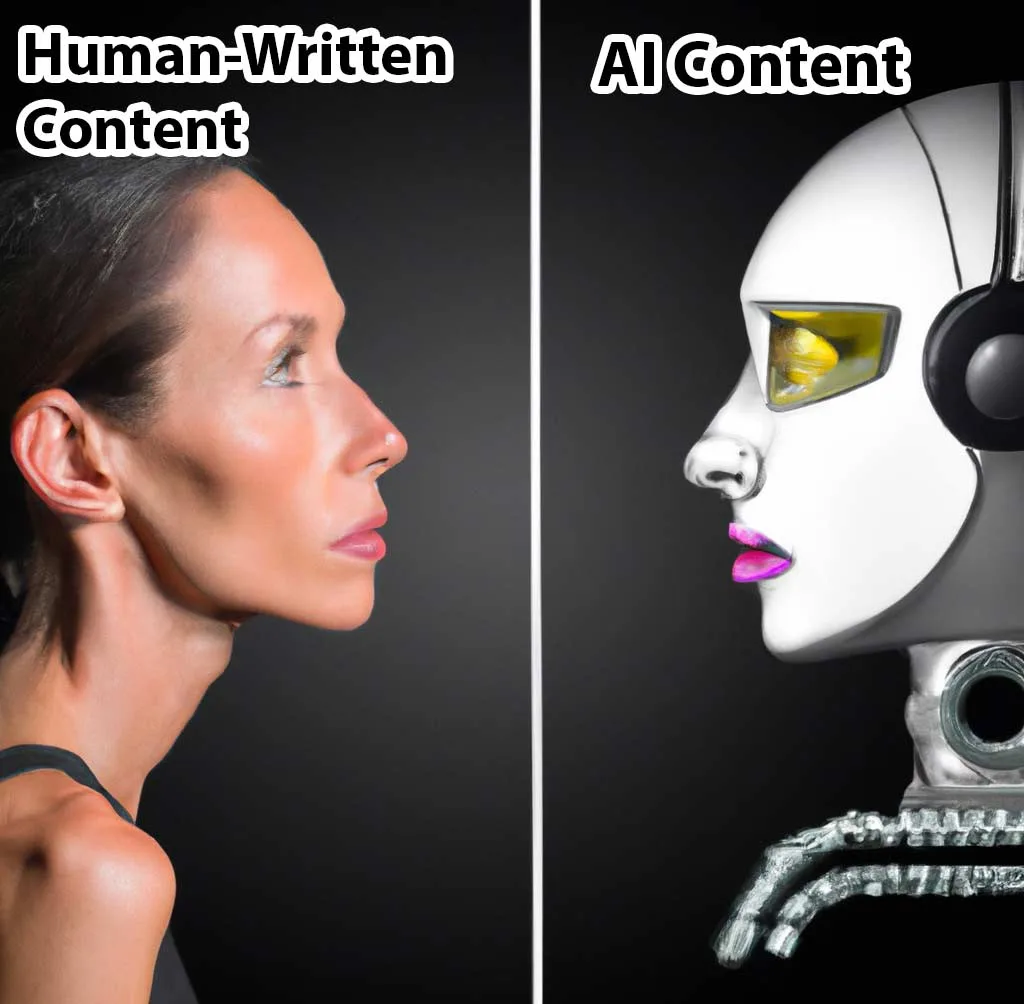Table of Contents
The rise of artificial intelligence (AI) has brought tremendous advances in automating content creation. AI tools like ChatGPT can churn out full articles in seconds on virtually any topic with coherent writing. This has led many businesses to replace or supplement human writers with AI.
However, while AI content has its benefits in terms of speed and scalability, human-written content still retains some key advantages in areas like originality, nuance, and search engine optimization. As a content producer or consumer, it’s important to understand the pros and cons of both forms.
The Origin Story: How AI Content is Made
AI content generators utilize machine learning models trained on massive datasets of online text. By recognizing patterns in these datasets, AIs can statistically predict plausible sequences of words and sentences to compose new articles.
The resulting content can seem deceptively human-like on the surface. But when you inspect it more closely, the automatically generated nature becomes apparent:
- Lacks original analysis and creative connections
- Struggles with nuanced takes or opinions
- Might contradict itself without a consistent argument
- Shows repetition and formulaic structures
So while AI can produce passable content quickly, human writers still dominate quality. Next, let’s explore why…
Human Writers Create More Original, Meaningful Content
The essence of good writing is crafting content that resonates uniquely with readers. This requires human skills like imagination, empathy, and logic – things current AI sorely lacks.
As a result, human writers generate content that is more insightful, compelling, and impactful. A talented writer can weave personal stories with researched facts to persuade audiences toward new conclusions. Such original analysis is beyond AI’s capabilities.
Additionally, human judgement calls regarding what topics to cover, which angles to focus on, what tone to adopt, etc. result in content better aligned with audience needs and interests. AI-generated content risks missing the mark since algorithms cannot yet fully grasp intent or contextual nuance.
The Search Engine Optimization Showdown
SEO relevance is make-or-break for websites wanting their content found by search engines and readers. Here’s how AI and human writing compare when optimizing content:
AI Strengths
- Automates keyword research for optimal density/placement
- Analyzes competitor sites for SEO techniques to emulate
- Rapidly produces large volumes of content to dominate results
Human Strengths
- Discerns reader intent to provide genuinely useful info
- Crafts topics and angles most interesting for target audiences
- Architects authoritative sites with logical information flows
While AI has SEO advantages in automation and volume, human creativity breeds authority and reader loyalty – increasingly weighted in Google rankings. Moreover, too much low-quality AI content risks dilution or duplication penalties.
Bots Can’t Beat Brains (Yet)…But They Can Help
For the foreseeable future, human written content retains an edge over AI generated text in areas like originality, meaningfulness, and search performance. Producing great content requires that uniquely human touch.
However, AI can still augment human strengths:
- Humans decide direction/focus while AI suggests supporting research
- Humans provide frameworks/outlines for AIs to generate initial drafts
- Humans edit AI drafts to add personality, analysis and finesse
The rise of AI need not displace human writing jobs – it can enhance them via human/computer symbiosis. The future remains bright for talented creators crafting content fueled by bots but brought to life by brains.
Here’s an additional section extending the comparison between AI and human-written content:
Monitoring Methods: Detecting AI Content to Maintain Integrity
As AI content generation becomes more advanced, actively being able to distinguish it from human writing is important for business, legal, and ethical reasons. Here are some emerging methods and tools:
AI Style Patterns Since AIs are trained on existing text datasets, much of their output unconsciously mimics or repeats common phrases in predictable ways. Services like GPTZero scan text for statistical patterns like:
- Repeated or oddly sequenced words
- Overuse of filler words like “also” and “therefore”
- High incidence of buzzwords like “innovative” or “disruptive”
So consistent irregularities can flag auto-generated text even when it reads coherently.
Logic Consistency Checks
Asking clarifying questions often exposes gaps in understanding with AI content. The logic might breakdown since the original text is fabricated without comprehension.
Some tools like CLAUDE direct a series of queries at the content to assess responsive consistency. If answers contradict or seem strangely irrelevant to the main article, its origin becomes suspect.
Source Traceability
Citing appropriate credible sources lends legitimacy to human writing and aids verification. But AI either fails to cite at all or does so incorrectly. Reverse image searches, quote checks, reference confirmations can all determine if citations are fabricated.
As quality benchmarks arise around distinguishing human vs. AI content using criteria of originality, coherence and accuracy, producers can certify legitimacy to foster consumer trust. Until AI advances enough to meet such benchmarks, humans remain the gold standard.


